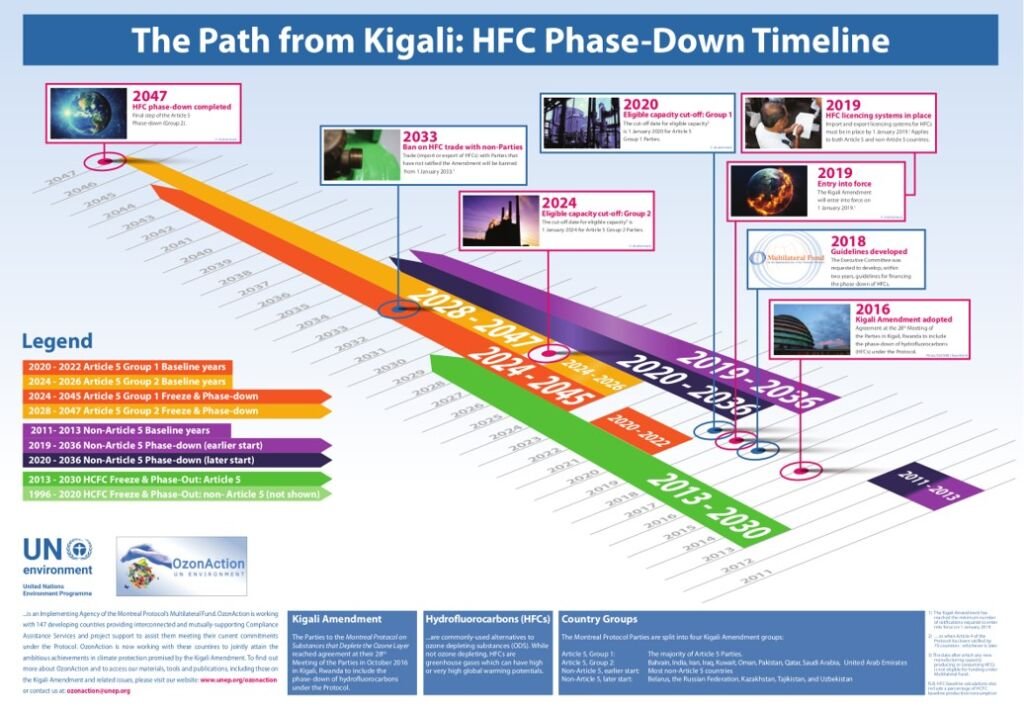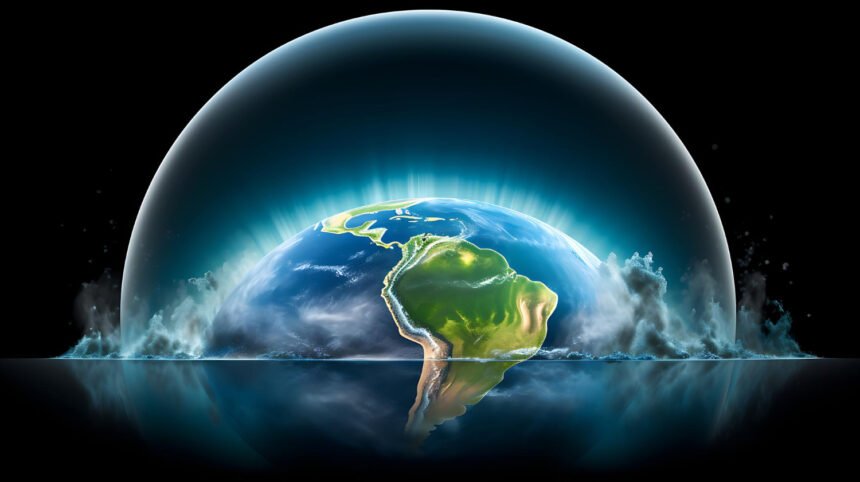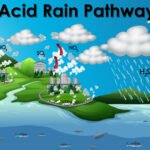Introduction:
The Earth’s stratospheric ozone layer acts like a natural sunscreen, shielding the planet from the most harmful portions of the sun’s ultraviolet (UV) radiation. This invisible layer is our defense against a dangerous force.

Too much UV radiation can lead to severe health consequences like skin cancer, cataracts, and immune system suppression in humans. It can disrupt fragile ecosystems, damage crops, and harm vital marine life like plankton, the bedrock of oceanic food chains.
In the 1970s, scientists made a chilling discovery: common, human-made chemicals known as ozone-depleting substances (ODS) were eroding this protective shield. CFCs, which were found in everything from refrigerators to aerosol cans, were particularly destructive.
With a growing ‘hole’ in the ozone layer, it became clear that we needed an urgent, global response – and this is where the Montreal Protocol stepped in to take decisive action.
What is the Montreal Protocol?
The Montreal Protocol on Substances that Deplete the Ozone Layer is a landmark international treaty agreed upon in 1987. It sets legally binding commitments to phase out ODS production and consumption, including chlorofluorocarbons (CFCs), once commonly used in aerosol sprays, refrigerators, and air conditioners.
Because of its success and universal global adoption, the Montreal Protocol is often hailed as one of history’s most successful multilateral environmental agreements. The Protocol is well-described by President Ronald Reagan in 1988 as –
The Montreal Protocol is a model of cooperation. It is a product of the recognition and international consensus that ozone depletion is a global problem, both in terms of its cause and its effects. The Protocol is the result of an extraordinary process of scientific study, negotiations among representatives of the business and environmental communities, and international diplomacy. It is a monumental achievement.
Where and When Did It Happen?
The Montreal Protocol emerged as a vital international response to this urgent global environmental crisis. This landmark treaty boasts universal ratification, with 197 nations plus the European Union signing on, making it one of the most successful environmental agreements ever.
The Montreal Protocol was signed in Montreal, Canada on September 16, 1987. Since then, the treaty has undergone several revisions in response to evolving scientific understanding and to accelerate the phase-out of harmful substances.
Historical Background:
The path to the Montreal Protocol was paved by alarming scientific discoveries and growing international concern over the degradation of the ozone layer.
Early Concerns (1970s): Scientists like Mario Molina and F. Sherwood Rowland first theorized the destructive potential of CFCs on the ozone layer. Their research showed that chlorine released from CFCs could act as a catalyst in the stratosphere, repeatedly breaking down ozone molecules.
Vienna Convention (1985): Growing worries fueled international action. The Vienna Convention for the Protection of the Ozone Layer established a framework for addressing ozone depletion. This convention didn’t have binding controls on ODS, but it laid the groundwork for more concrete action.
Discovery of the Ozone Hole (1985): The British Antarctic Survey’s startling discovery of a massive “hole” in the ozone layer over Antarctica became irrefutable evidence of the severe dangers caused by ODS. This revelation shocked the world and spurred urgent calls for protective measures. The strong scientific basis linking ODS to ozone depletion made a powerful case for global action.
Montreal Protocol (1987): Building on the momentum created by the Vienna Convention and the ozone hole discovery, the Montreal Protocol was formulated with legally binding restrictions on producing and consuming ozone-depleting substances.

Increased public awareness of the dire consequences, coupled with the shocking imagery of the ozone hole, generated the political will necessary to pass this ambitious treaty.
Highlights of the Montreal Protocol:
Phased Reduction and Elimination of ODS: The core of the Montreal Protocol is a schedule for the phased reduction and ultimate elimination of various ozone-depleting substances. The most stringent control measures were targeted at CFCs. Countries involved have been steadily cutting production and consumption of ODS groups (CFCs, halons, carbon tetrachloride, and others) as required by the Protocol’s specific schedules.
Developed vs. Developing Countries: The treaty established different timetables for developed and developing countries. Developed countries led the phase-out process, while developing countries, known as Article 5 parties, were granted a grace period to meet compliance deadlines.
Trade Restrictions: The protocol restricted trade in ODS and products containing ODS with countries not parties to the agreement.
Multilateral Fund: Established to provide financial and technical assistance to developing countries to fulfill their phase-out obligations and transition to ozone-friendly alternatives.
Essential Use Exemptions: Limited, critical uses of ODS may be exempted when no suitable alternatives exist. This is to prevent disruption of sectors with no immediate substitutes.
The Kigali Amendment (2016): This major amendment focused on phasing down hydrofluorocarbons (HFCs), powerful greenhouse gases sometimes used as replacement chemicals but found to contribute significantly to climate change.

Science drives the Montreal Protocol. Continuous evaluation of the ozone layer’s state and technological advancements in ODS alternatives prompt regular reviews of the treaty’s effectiveness. The Protocol has been amended several times to strengthen controls and accelerate phase-out schedules.
Success of the Montreal Protocol:
Ozone Layer Protection: The Montreal Protocol’s primary achievement is reversing the damage caused to the ozone layer. The treaty’s restrictions on ODS production and use have slowed, halted, and are now beginning to reverse the thinning of the ozone layer. Projections indicate full recovery by mid-century.
The Montreal Protocol’s success is exemplified by the 98% reduction of ozone-depleting substances (ODS) globally compared to 1990 levels. The climate impact is significant, as most ODS are also potent greenhouse gases.
Protecting Human Health: Without the Montreal Protocol, ozone depletion would increase tenfold by 2050. This devastation would have a direct human cost, causing millions of additional cases of melanoma, other cancers, and eye cataracts.
The treaty stands as a shield. By limiting UV radiation, the Montreal Protocol plays a crucial role in preventing –
Skin cancers (including melanoma) – By 2030, it’s estimated to avoid two million skin cancer cases yearly.
Cataracts and other eye damage
Weakening of the immune system
Environmental Safeguards: Excess UV radiation harms terrestrial and aquatic ecosystems. The Montreal Protocol helps to –
Protect crops and reduce agricultural losses
Maintain the health of phytoplankton, the foundation of marine food chains, and
Limit damage to sensitive forests and natural systems
Climate Change Mitigation: Many ODS were powerful greenhouse gases – their removal significantly contributes to fighting climate change. The Kigali Amendment is specifically intended to address HFCs.
Blueprint for Collaboration: The Montreal Protocol is a remarkable example of global environmental cooperation. It demonstrated that nations can collectively address complex environmental problems.
Disputes Regarding Montreal Protocol:
While the Montreal Protocol is hailed as a major environmental success story, it hasn’t been entirely free of disputes or challenges. Here’s a detailed look at some key conflict areas surrounding the Protocol:
Essential Use Exemptions: The Protocol allows for “essential use” exemptions in the face of limited ODS alternatives for specific sectors. These exemptions often become points of contention.
There’s debate over what constitutes a “true” essential use, creating tensions between environmental groups who desire rapid elimination of ODS and sectors facing technological and economic hurdles during the transition.
Illegal Trade in ODS: A persistent black market for ODS continues despite global restrictions. Smuggling of phased-out substances undermines the Protocol’s goals and complicates enforcement. International partnerships are fighting illicit ODS trade, but it remains a serious challenge.
Funding for Developing Countries: The Multilateral Fund plays a vital role in assisting developing countries to comply with the treaty. Some nations and experts may disagree on the necessary funding level, or criticize that funds are not always sufficiently targeted or efficiently managed.

The pace of ODS Phase-outs: Environmental groups sometimes push for accelerated removal of certain ODS categories faster than some industries or national economies believe they can adapt. On the other hand, industrial lobbies may push back against tighter schedules when ozone-safe alternatives are less economically viable.
Hydrofluorocarbons (HFCs) and Climate Policy: Though the Kigali Amendment addresses HFCs and their significant contributions to climate change, disputes can arise when the goals of protecting the ozone layer clash with those of climate change mitigation. Some parties may propose HFC restrictions or substitutions that have other environmental drawbacks.
Despite these disputes, the Montreal Protocol has systems designed to address issues. Its committees and regular meetings of the signatories are spaces for dispute resolution, negotiation, and finding shared solutions.
Conclusion:
The Montreal Protocol represents a shining example of what nations can accomplish when they collaborate to combat urgent environmental threats. It embodies the importance of science-based policymaking and the willingness to work collectively towards the greater good.
Continued commitment to the Montreal Protocol is essential to securing the full recovery of the ozone layer and protecting life on Earth from the adverse consequences of excess UV radiation.





